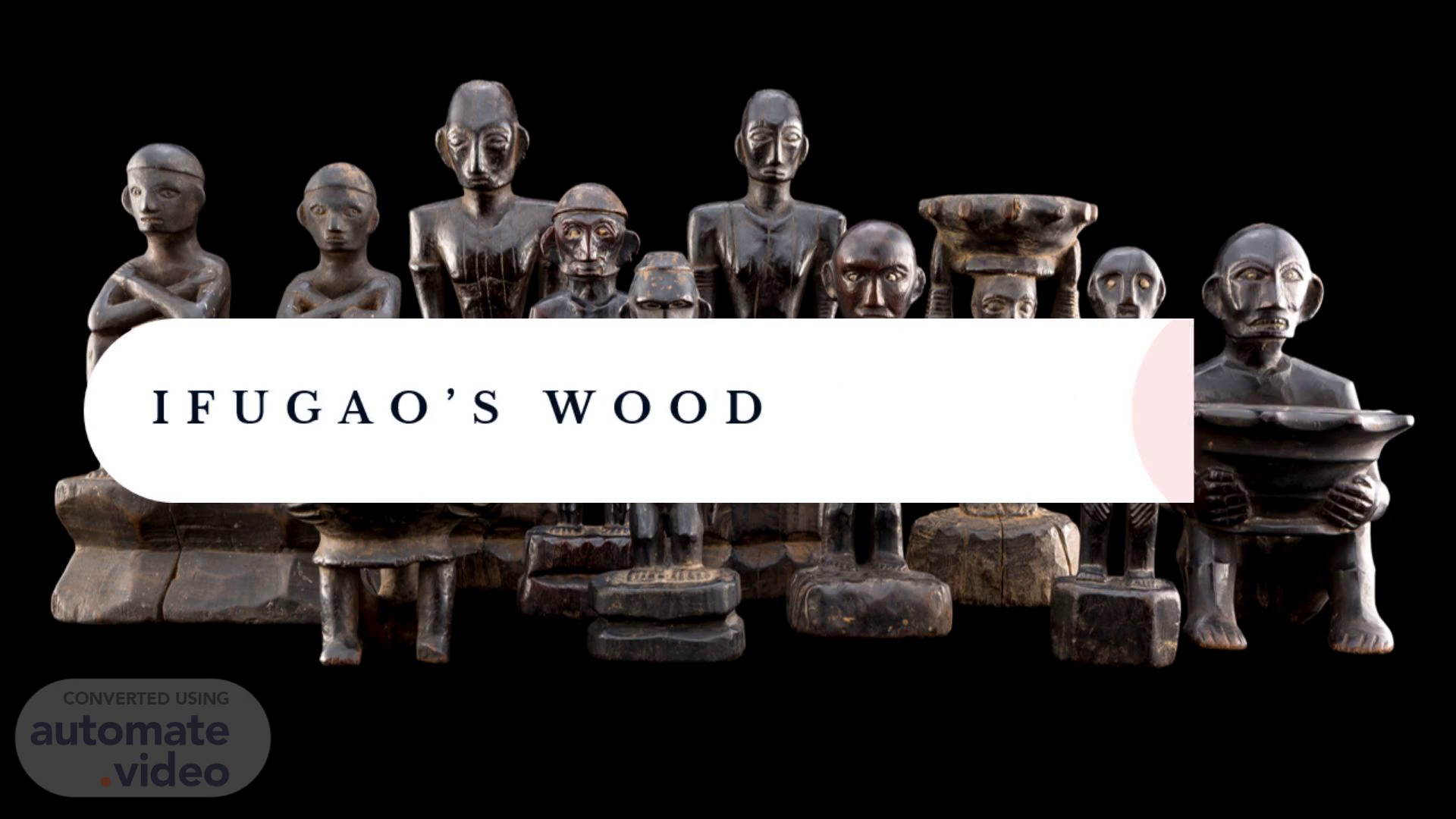Scene 1 (0s)
IFUGAO’S WOOD CARVING.
Scene 2 (6s)
HISTORY OF WOOD CARVING.
Scene 3 (13s)
The mountainous region of Central Cordillera in northern Luzon is home to many indigenous communities. Their fierce self-determination and geographic isolation provided relative protection from the cultural influences of Spanish colonization. However, their art did not remain unchanged. Communities retained useful and meaningful forms, abandoned others, and created new forms to meet new purposes – a tradition that has continued into the 21st century. In Central Cordillera, art is part of everyday life and is intrinsically linked to community and spiritual well-being. Many villages are built around a central stone platform where social and spiritual rites are performed. These include the worship of deities and ancestors and the consecration of sculptural figures..
Scene 4 (44s)
Memorandum Circular 2-96: giving the people of Ifugao the right to manage their forest, exempting them from the nationwide logging ban because of the indigenous “muyong” practice that is an important factor in the wood carving industry of the province. - DENR.
Scene 5 (1m 23s)
Also known as “Bul-ul” or “Tinagtaggu’ Purpose: guard rice crop by the Ifugao & sub-tribe Kalanguya representation: gain power and wealth from the presence of the ancestral spirit. Usage: ceremonies associated with rice production and with healing Creation: involves alwen bulul by a priest to ensure that the statue gains powers. Form: sex-related symbols such as mortar for the female; pestle for the male; commonly seated on the ground, arms crossed over his upraised knees. Male Bulul: loincloth Female Bulul: Tapis. earrings, and anklets..
Scene 6 (1m 49s)
Materials: Narra or Ipil wood. Ritual Performance: 1. Bulul is touched by hands dipped in the blood of a chicken or pig in a ritual called tunod during the rice planting season. 2. Over time the blood imparts a dark color to the figures, overlaid with a patina of grease from food offerings. 3. Bulul is handed down to the first child of a family. Typically the older statues have beetle holes made by insects in the granary. NOTE: Last traditional rituals were held in the 1960's -Ifugao former “mumbaki”.
Scene 7 (2m 15s)
STANDING RICE DEITY 20TH CENTURY. ARTIST: IFUGAO.
Scene 8 (2m 23s)
undefined.
Scene 9 (3m 21s)
undefined.
